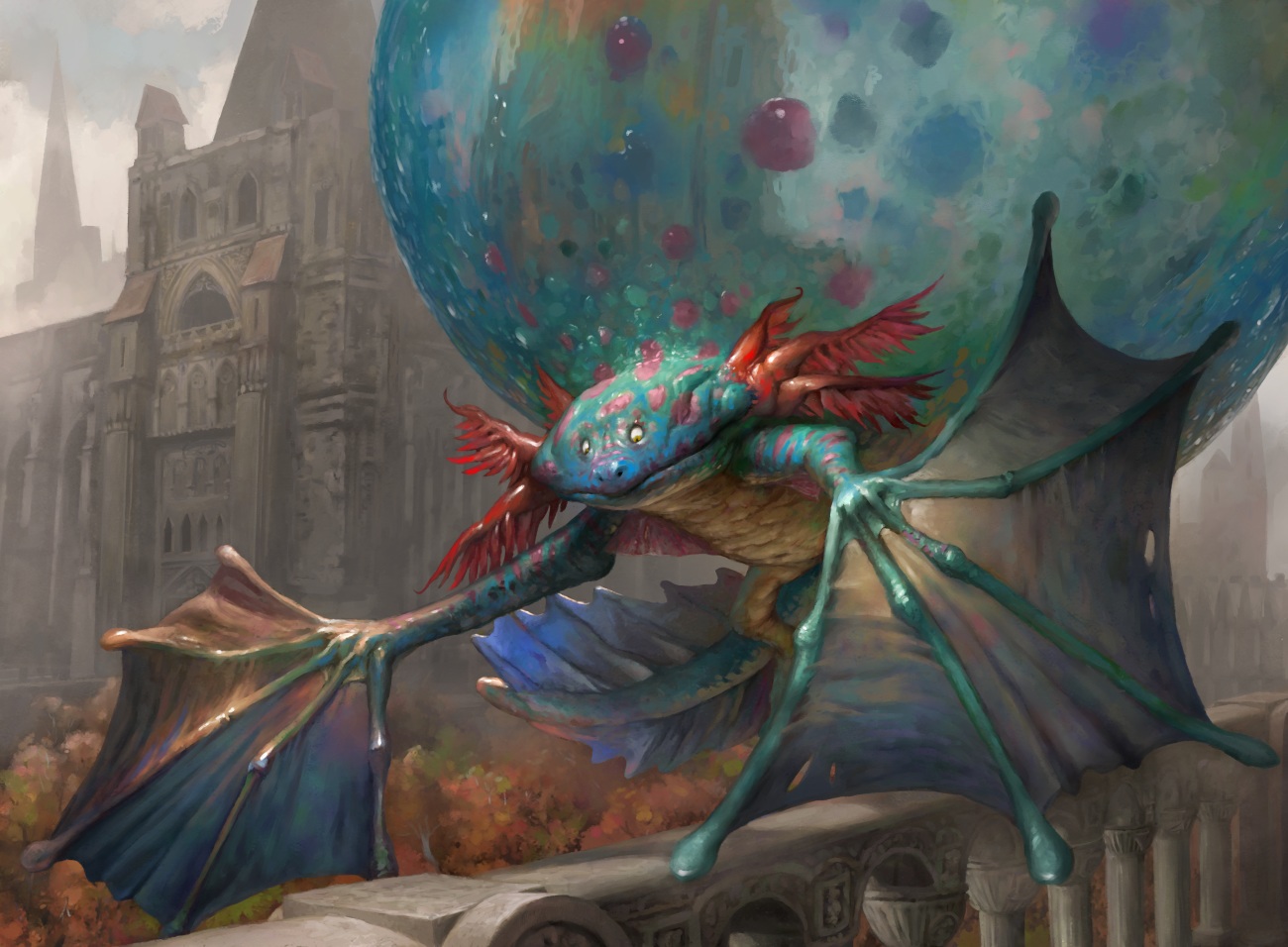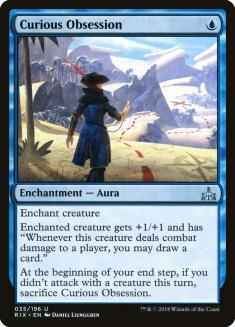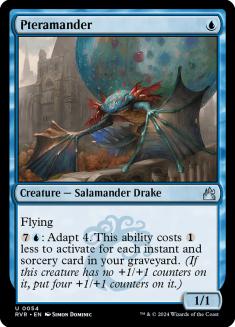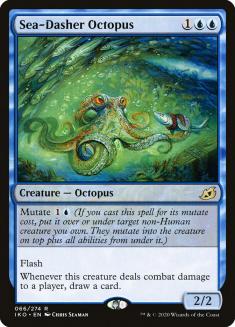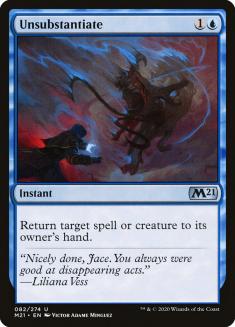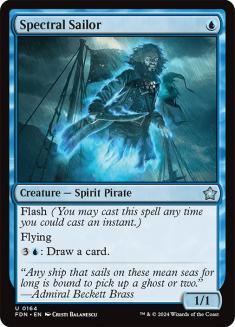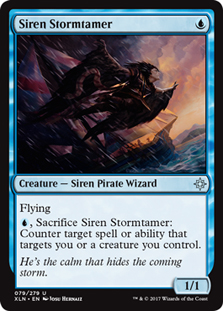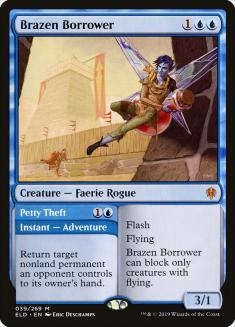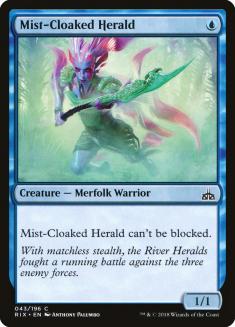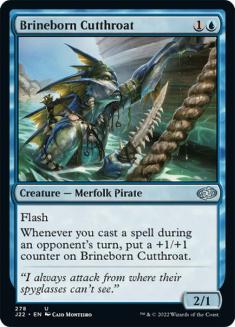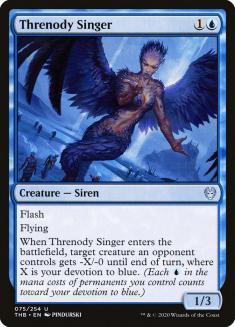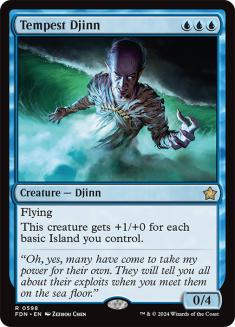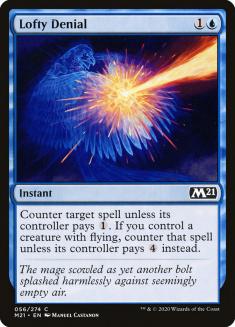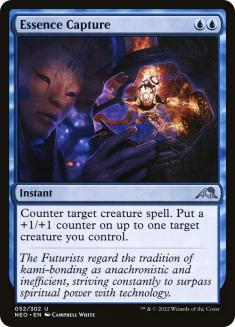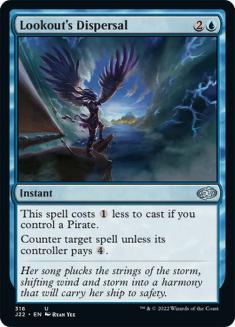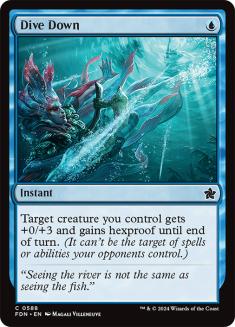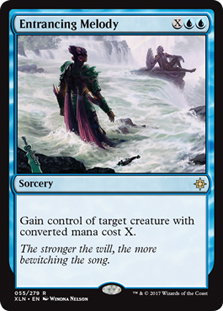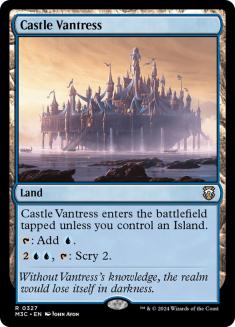With Historic getting more and more attention and gaining in popularity, it was kind of inevitable I’d end up writing about a strategy you can play in Historic that is dear to me after previously having a ton of experience and success with the Standard iteration of it: Mono-Blue Aggro. You could call it a bit of a personal obsession.
I’m even more excited to write about this deck with the news that Teferi, Time Raveler has left the format for now. This is huge news for Mono-Blue Aggro, as that card is obnoxious to our counterspell theme deck.
For those new to this strategy, the idea is that you command a ragtag band of evasive cheap blue creatures that chip in for modest amounts of damage whilst you keep them protected and seek to disrupt your opponent’s gameplan with countermagic. For anyone familiar with Delver decks in Legacy, this deck is pretty similar in nature but much scrappier in practice.
The thing that elevates all this is the existence of a card like Curious Obsession. If you can resolve it and protect the enchanted creature, you’ll get a steady stream of card advantage for the rest of the game. Your cards might individually be very low in power level, but it doesn’t necessarily matter if you’re drawing twice as many of them as your opponent is.
To better understand the deck, you can broadly split opposing decks and matchups into three categories:
- High-synergy decks tend to be bad against you. This is because a lot of their cards are individually very weak, which in turn means your countermagic is simultaneously not very stressed and is very powerful; you can happily let a lot of your opponent’s cards resolve as they just aren’t threatening, and the few highly important ones that you do counter will be back-breaking for the opponent to have denied.
- Decks that are bigger than yours tend to have their matchup depend on how many of their cards actually matter against you, and how much efficient interaction they have access to. A midrange deck with bulky ground creatures that can’t block your evasive creatures is going to be easier for you than a control deck featuring a high density of black discard and removal spells.
- Decks that are smaller than yours are exactly what you don’t want to be playing against. Again, if they’re high-synergy, then you can still put in some decent work disrupting those synergies, though in general if your opponent has a lot of one- and two-mana spells and is trying to kill you, then your countermagic will look expensive and awkward in contrast and you won’t have much time to set up or benefit from your card draw engines. Your creatures are also just so small and frail that winning races against true aggro decks is very challenging.
Building Mono-Blue Aggro in Historic presents more challenges and more uncertainty than when we were building it back in Standard. You see…
We have a lot more options in the Historic card pool, but most notably the main constraint on the old Standard Mono-Blue Aggro deck is now gone; we can actually play more than four Curious Obsession-style card draw engines now thanks to the existence of Curiosity and Sea-Dasher Octopus. Previously you knew you’d have exactly four copies of this effect and you’d build with that in mind, hoping to protect your Curious creature when you drew the powerful Aura whilst also making sure that your deck could function when you don’t draw this Aura and effectively play a more fair gameplan with Tempest Djinns, Merfolk Tricksters, and adapted Pteramanders.
Now you have the option to draw a card-draw engine much more consistently if you want, and there’s the question too of how many copies of these effects you want; the full twelve is almost certainly too many, and clearly you want more than just four, but the exact line is hard to figure out.
Personally I’ve been happy with the full playset of both Curious Obsession and Curiosity, even if Curiosity is a noticeably weaker card due to not making your creature larger, thanks to the consistency that these offer your deck. Sea-Dasher Octopus is fine for adding more redundancy and can play nicely alongside countermagic, giving you something to flash in when your opponent doesn’t cast anything you wish to counter, but is definitely a bit clunky and expensive, and it’s painful to draw more than one copy of the Octopus early as a result.
Being able to have so many Curiosity effects can shift play-patterns with the deck from what you’re used to. You can play a lot more aggressively with these Auras, especially in Games 1, as even if your opponent untaps and kills your enchanted creature you often aren’t that far away from suiting up the next one. The fact that linear decks thrive in Historic currently, and many of them are light on interaction, helps contribute to this too.
The fact I’d even consider registering a card like Unsubstantiate in Mono-Blue Aggro now only serves to emphasise these shifts. Were this card legal at the time I would never have even considered registering it in Mono-Blue Aggro back in Standard a year and a half ago; the card is just too bad in the fair games where it is hard to spend a whole card just to bounce an opposing spell back to hand for a bit.
When you’re getting a Curiosity-effect online this much more often though, and thus playing fewer fair games, it becomes more compelling. The biggest draw to the card in this context is that, when you have a card-draw engine online and all you care about is buying time to draw more cards, then Unsubstantiate helps you get around the problem of drawing the wrong counterspell; it could be a Negate or an Essence Capture and line up poorly against what your opponent has, but instead it just doesn’t care about the opposing text box. It even bounces Shifting Ceratops from the stack!
There are notable costs to the card too though, and as a result Unsubstantiate is the card I’m least sure on the numbers for. The card is notably at its worst in the matchups that are already the hardest for you: low-synergy, low-curve, aggressive decks.
It’s also not great against high-interaction removal piles where getting a Curiosity online can be a hard task to accomplish, though at least against these decks you can cash it in in the mid-game to return a creature to your hand that’s about to be killed. Along similar lines, the card is definitely worse in sideboarded games where most decks are more likely to draw that key piece of interaction, and the more copies of Unsubstantiate you play, the harder it is to sideboard them out when you decide they’re bad against your opponent’s post-sideboard configuration. So the card is surprisingly good, and very much worth trying out, but it does come with real costs too that make the card’s value hard to assess.
So you want to suit up some creatures? These three are easily the most exciting options for your creature base, and I’d be hard-pressed to go below four copies of any of them. Spectral Sailor is your best one-drop, and probably would be even if it was just a textless 1/1 flyer with flash, but its card draw ability is dramatically more relevant than you might realise at first, as it helps you pull ahead in card advantage in the games where your Curiosity-effect engine is broken apart.
Siren Stormtamer is our other premium one-drop for its ability to protect an enchanted creature, though the fact that it’s a Pirate is also excellent as, paired alongside Spectral Sailor, this helps enable you to play Lookout’s Dispersal. Brazen Borrower is largely in this deck just because having access to Petty Theft gives you so much more versatility in your play-patterns, and the fact that you then get a 3/1 flyer is an excellent bonus. If you’ve not had the joy of playing Brazen Borrower in a tempo deck yet, then you’re missing out, as it really is remarkably more effective in decks that make true use of the pressure that its creature half provides.
Honestly Pteramander is a lot worse here than you remember it being, as I think it is much harder to play Opt than it was previously, due to both the speed of Historic and the number of Curiosity effects you have straining your mana a bit more. I still play a couple of copies of Opt to enable Pteramander anyways, and our Salamander Drake friend is certainly fine, but we’re mainly playing it over other options just as an additional way to enable early Lofty Denials rather than for the late-game power it used to provide.
Conversely, Mist-Cloaked Herald is at least a bit better than you remember. Which is not to completely excuse the card’s low power level, but part of why I disliked it previously was that it was only good in Curious Obsession games, and those games just happen so much more often now that suddenly the bonus on the Herald starts to feel a bit more relevant. On top of that, Shifting Ceratops is the nightmare card and the fact that Herald can actually attack past it is a really nice bonus.
Honestly I kind of hate the idea of playing two mana creatures that die to Stomp, and sadly Merfolk Trickster and Brineborn Cutthroat both run into that issue, which makes them less appealing that I might like against aggressive decks. Meanwhile they both get brick-walled by Zombies against Field of the Dead decks, so there’s not really anywhere that I’m excited for the cards. Really the most notable thing about them is that they help enable Wizard’s Retort and Lookout’s Dispersal respectively; in that regard I do think Brineborn Cutthroat is a bit better at least as I really like Lookout’s Dispersal, and it’s a fine route to go down if you’re desperate to max out on Dispersals.
Threnody Singer looks like a strange card for me to be maindecking a copy of, but I’ve been really pleased with it as a sideboard card against Mono-Red and that matchup is so tough that I don’t mind warping my deck a bit with it in mind. It doesn’t die to Stomp, it blocks reasonably, it doesn’t even die to Lightning Strike if you can sneak a Curious Obsession on it, and whilst it’s not a card you really want against slower decks, at least you can hold it open alongside countermagic, and it flies over Zombie tokens, so it is far from the worst.
Look, I love this card and it has done a lot of work for me, but it’s really hard to put sorcery-speed cards in your maindeck in a format this fast. I do think Tempest Djinn is a solid sideboard card against low-synergy aggro, and it is a card I want to try out more with this in mind, but I just can’t imagine maindecking it at all.
The counterspell package is an eternal work-in-progress that you should shift around based on what decks you expect, but Lofty Denial is the truth and an easy four-of no matter what as it is easy to enable and hits basically everything.
Lookout’s Dispersal does a bad Lofty Denial impression as it is very good when you draw one of your eight Pirates but pretty clunky when you don’t. I still like the card a lot due to how versatile it is but the fact that it can have a pretty disappointing floor, especially if your opponent is killing your creatures, makes it hard to play the full four copies.
Wizard’s Retort fills out the trio of conditional counterspells we can choose between, but it requires you play Merfolk Trickster in order to have enough Wizards to enable it and I’m unwilling to do that presently.
Spell Pierce is not ideal in the format due to how many ramp spells there are to help opponents get around its tax, but I want some one-mana interaction in my maindeck to be paired alongside that Turn 2 Curious Obsession and it’s hard to justify maindecking Dive Down in a format where people are so disinterested in killing each other’s threats in Game 1. I think the decks you want Negate against are broadly good matchups for you anyways, and I don’t want too many dead cards against Goblins in Game 1 since that deck is excellent, so I’m not playing any Negates to complement the Spell Pierces. Essence Capture, however, is excellent especially considering how creature-focused Historic is at present.
There are a lot of sideboard options available to you, but to run through a few I particularly like, I do think Dive Down gets a lot better in sideboarded games if you know your opponent will be dense on removal for Games 2 and 3, so whilst maindecking this card is unappealing I have enjoyed having access to the card in my 75. Aether Gust is necessary for any Shifting Ceratops that are running around, and it is pretty obscene against Goblins specifically, stopping them from gaining any real traction.
Sorcerous Spyglass is in the sideboard as a nod to Witch’s Oven, with the Sacrifice decks being the matchups I am most scared of facing; Mayhem Devil is such a horrific card to have to fight through. I’m honestly not sure of the correct approach to these matchups to give yourself the best possible fighting chance and the next step with this deck will likely be figuring out something resembling a solution to this problem.
Entrancing Melody is a touch slower than I’d like, but if you can resolve it it is a game-changer against low-synergy aggro, and the Castle Vantress in the sideboard is there in order to up your land count so you can more reliably cast your Melodies. Getting that clean two-for-one, and dramatically altering the battlefield, is huge for helping turn the tide in your favour.
With all that in mind here’s my current list:
Creatures (17)
- 4 Siren Stormtamer
- 2 Mist-Cloaked Herald
- 2 Pteramander
- 4 Spectral Sailor
- 4 Brazen Borrower
- 1 Threnody Singer
Lands (20)
- 20 Island
Spells (23)

I’ve had good success with this list so far, and am excited to keep everyone updated as I continue to tune and refine it! The Historic meta is still unstable, ever-shifting as people try and figure out what the best decks really are, but it feels like Mono-Blue Aggro puts up a decent fight and has real potential especially as people continue to work on it.

